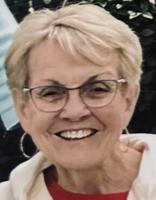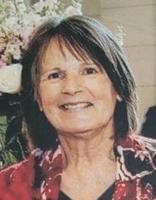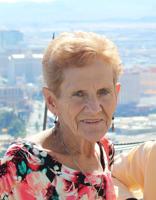Angel Naples, 17, a senior at Lockport High School, says she falls "in the middle" when it comes to opinion of the district's new facial and object recognition surveillance system, while senior Tranx Matthew Cuabang, 17, supports it.
"It's better to have more protection than not," he said.
"Yeah, it can help protect us from certain people, but it's not going to protect us from everything,” Naples counters.
The Union-Sun & Journal interviewed seven LHS students last month to learn what they think about the new system, as well as the claims of its supporters and detractors.
During the course of the interview, students continuously expressed a desire for administrators to tell them more about the system. The district's policy currently states that no students' information could be put in the database, but that could change if the Board of Education decides to amend its policy.
The interview was when four of the seven students found out that the system had been activated back in January.
The ones who knew learned about it either through social media or news articles, not district administrators, they said.
Junior Mariana Shultz, 17, and the daughter of one of the system's chief local critics, said she believes administrators should have been the first to tell them all about the system.
"This is a huge system, especially since we're like the first ones to have it. It's something that definitely should have been discussed with the students, like on the first week of school, and it wasn’t,” Shultz said.
On the first day of school in September, LHS Principal Dawn Wylke gave a presentation about new things going on in the high school, and she did mention something about a new security system, Shultz recalled.
“It had different new implementations and one of them was just new security system or something like that. (Wylke) did not talk about it. I don't even remember if she read it. She just kind of had the slide up there and continued with her presentation,” Shultz said.
•••
Several of the students didn’t really agree with supporters' claim that the system's promise is to stop or lessen the likelihood of a school shooting. Theoretically, the system scans for the presence of both flagged individuals who are not allowed on district property and certain gun types.
Nicholas Doxey, 17, and a senior suggested someone could just stuff a gun into their backpack.
“It can't scan through your bags or anything like that,” he said.
Of the district's original intention to include the images of suspended students in the database — a fight that it lost — Naples suggested it doesn't make sense. A suspended student who was intent on doing damage could simply wait until their suspension was lifted.
Cuabang thinks the system could be helpful in determining when someone opens a door for a student who shouldn’t be in the building.
Metal detectors or alarm systems on the doors would work better to protect students, Naples said in reply to Cuabang.
•••
Opponents of Lockport’s surveillance system see its operation as an invasion of privacy. New York Civil Liberties Union insists that the system is turning students into “lab rats for experimental technology.”
Some of the interviewed students expressed the same concerns.
"I think these cameras can end up being an invasion of our privacy because various times, whenever a teacher has brought it up, like to my class, the way they describe it has also been that they are going to use the cameras not just for our protection, but as a way to discipline people," Shultz said.
Eli Schrader, 18, a senior, said he believes the district is relying on technology that isn’t really common yet.
Senior Susie McDonald, 17, said administration is “using us as test dummies, basically.”
Cuabang concedes the technology may be invasive of privacy, but says, “I don’t think it really is that bad.”
Naples, Cuabang, Lilibeth Rosario-Santiago and Schrader were all surprised when a US&J reporter told them the system had been activated in early January, when students returned to school after the Christmas break.
Naples said she feels “stalked” by her school. Rosario-Santiago said she feels “like a guinea pig.”
One thing upon which all of the interviewees agreed? Administrators need to tell the students more about the new surveillance system.
Despite his support, Cuabang said he wished administrators had provided more information to students.
Naples suggested even an announcement on Google Classroom “would have been nice.”
"Something this big should have been properly told to us ...We're in the school all day," Shultz said. "We should know that there are facial recognition cameras in our school.”
"I just want to know what's going to finally make them speak up to us and let us know what the system does. When are they going to make it public to us?" Doxey said. "When are they going to be the leaders of the school, which they are supposed to be, and stand in front of us and tell us this is here it's on this is what it does and ask us how we feel?”
In response, Wylke said she held small meetings with students on Feb. 25 and safety was one of the topics.
"We share our procedures and purposes with students at a few different points in the school year along with expectation guidelines," Wylke added.
Shultz confirmed Wylke talked about security and mentioned the district had a facial recognition system, and "didn't really say anything else about it." Schrader said the meeting was held during their English class.
Wylke said the families and staff also were given a letter in January when the facial recognition system went live in January with the "appropriate information."

















Commented
Sorry, there are no recent results for popular commented articles.